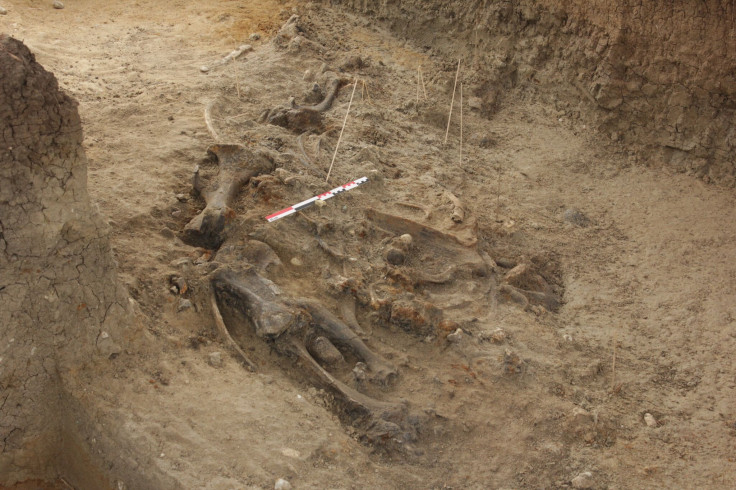Ancient Bones Reveal Early Humans Thrived, Hunted In Philippines 700,000 Years Ago

Scientists have unearthed a group of ancient bones and stone tools in the Philippines, a discovery that significantly changes our understanding of archaic human migration and suggests our ancestors lived in the region long before any of us thought.
The find, made at Philippines’ largest island Luzon’s Kalinga province, includes an almost complete carcass of Rhinoceros and the remains of Philippine brown deer, freshwater turtle, monitor lizard, and stegodon or the extinct relative of elephants. The bones were accompanied by as many as 57 stone tools, nearly 50 of which were sharp-edged flakes and two were possibly hammer stones.
Though previous fossil evidence — a small foot bone — suggested early humans colonized the Philippines some 67,000 years ago, the latest discovery changes that idea completely. This is because the Rhino fossil unearthed from the site appeared to be butchered from the tools (or similar to those) and the clay-rich bed in which they were buried dates back to the time between 777,000 and 631,000 years ago.
Scientists used a combination of sophisticated dating methods, including electron Spin Resonance, argon dating and uranium series dating, to confirm that the rhino was butchered sometime around 700,000 years ago. They noted a bunch of cut-marks on the bones of the long-dead animal, along with beating marks on the left and right humerus bones. This, according to the researchers, might have been done with hammer stones to gain access to its marrow.
This means archaic humans were active in the region long before Home sapiens came to the scene. But, who were these humans and how they reached this area remains unknown as no other human fossil or artifacts relating to their mode of movement was found.
According to study co-author Gerrit van den Bergh, from the University of Wollongong, the hominins, possibly Homo erectus, might have used some sort of watercraft to move from north to south with ocean currents. They might have passed through the Philippines before reaching Flores where Homo floresiensis, aka the Hobbit population, came to be.
The idea of the boat seems a little contradictory as until now it was assumed pre-modern humans didn’t have boats, but the timeline of early human activity in Luzon perfectly matches with that of Hobbit’s ancestors in Flores, according to a release from the University. This, along with other evidence of early human activity on other south-east Asian islands, further bolsters the theory of moving north to south.
"If you look at the fossil and recent faunas you see that there is an impoverishment as you go from north to south," van den Bergh said in a statement. "On Luzon, you find fossils of stegodons, elephants, giant rats, rhino, deer, large reptiles and a type of water buffalo. On Sulawesi, the fossil fauna is already impoverished; there's no evidence of rhinos or deer ever entering there. Then on Flores, you only had stegodons, Komodo dragons, humans and giant rats, that's all."
"If animals did reach these islands by chance, by entering the sea and following the currents south, then you would expect the further south you go the fewer species you would find — and that's what we see,” the researcher added.
He further notes that Tsunamis in the tectonically active waters might have contributed to the process and carried people and animals to the sea, and believes the latest work would lead further discoveries to give more insight into the migration history.
The paper, "Earliest known hominin activity in the Philippines by 709 thousand years ago," was published May 2 in the journal Nature.
© Copyright IBTimes 2024. All rights reserved.





















